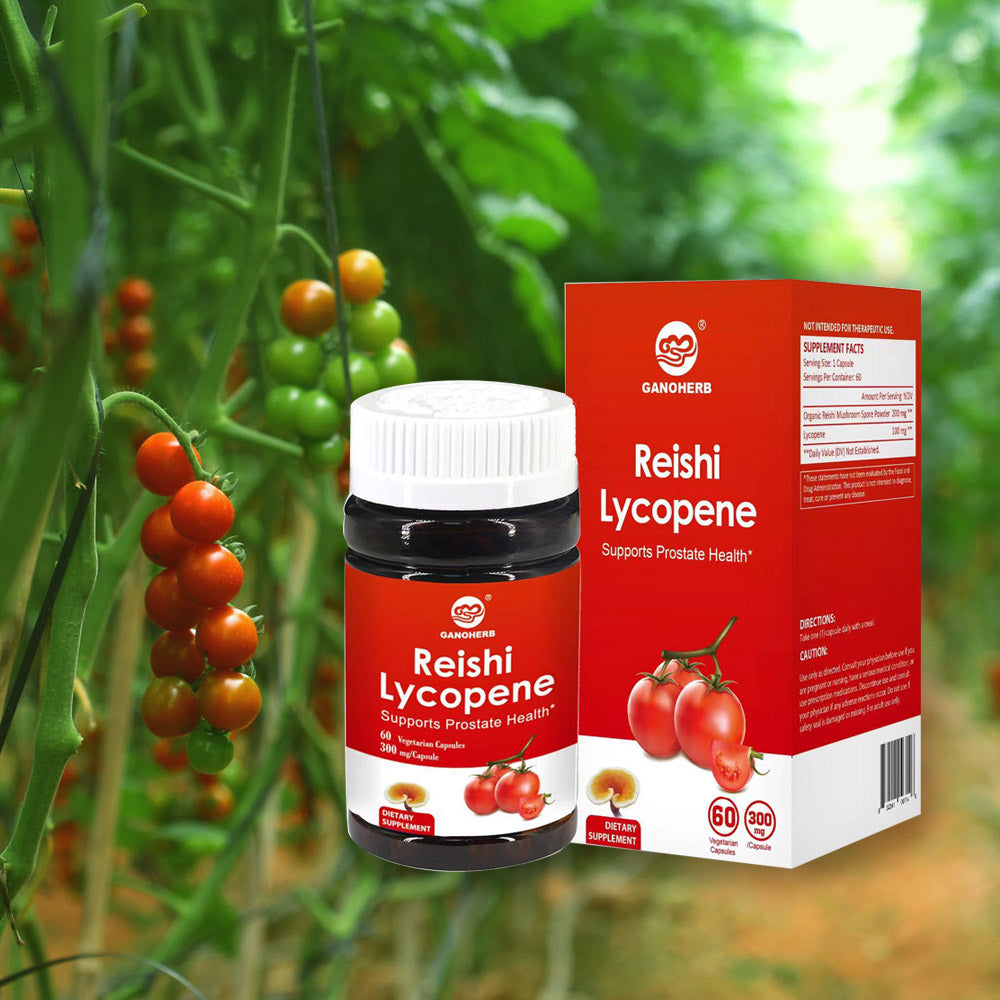Unlocking Reishi Spore Oil: Nature's Micro-Encapsulated Treasure
Deep within the ancient forests, growing on hardwood trees, thrives the enigmatic Reishi mushroom (Ganoderma lucidum). Revered for centuries across various Asian cultures, it holds a unique place in traditional lore. While the mushroom itself is visually striking, its most concentrated essence lies hidden within microscopic structures: the spores. Reishi Spore Oil represents the culmination of unlocking this potent inner core through specialized extraction techniques. This article delves into the fascinating world of Reishi Spore Oil, exploring its origins, unique characteristics, production complexities, chemical makeup, and the cultural significance surrounding its source.

1. The Botanical Origins: Ganoderma Lucidum and Its Reproductive Cycle
Reishi Spore Oil's journey begins with the Reishi mushroom itself. Scientifically classified as Ganoderma lucidum, this woody fungus belongs to the Ganodermataceae family. It is a saprophytic and parasitic fungus, typically found growing on decaying logs or weakened trees of species like oak, maple, or plum. The mature Reishi mushroom develops a distinctive kidney-shaped or fan-like cap, often exhibiting a glossy, lacquered appearance in shades of deep red, black, or purple, hence its common name Lingzhi in Chinese, meaning spirit plant or divine mushroom.
Crucially, the mushroom is the fruiting body – the reproductive structure. Its primary biological function is to produce and release spores. These spores are analogous to seeds in plants; they are the means by which the fungus propagates. Billions of these microscopic, dust-like spores are released from the underside of the mushroom's cap, carried by wind to potentially colonize new substrates. It is from this immense quantity of spores, representing the mushroom's concentrated reproductive material, that Reishi Spore Oil is ultimately derived. Understanding this life cycle underscores why the spores are considered a distinct and potent aspect of the Reishi organism.
2. The Challenge: Extracting the Essence from Nature's Fortress
Harvesting Reishi spores is only the first step in a highly intricate process. The spores themselves possess an incredibly tough outer shell, primarily composed of chitin and sporopollenin. This shell is nature's formidable defense mechanism, evolved to protect the delicate genetic material inside from harsh environmental conditions like UV radiation, digestive enzymes, and physical damage. While essential for the spore's survival and dispersal, this shell presents a significant barrier to accessing the valuable constituents within for human use.
This is where the concept of spore wall breaking becomes paramount. Simply consuming intact Reishi spores yields minimal benefit, as the human digestive system cannot effectively breach this resilient barrier. Therefore, specialized technologies are employed to crack or rupture the spore wall without destroying the sensitive internal components. Techniques include high-pressure homogenization, enzymatic treatments, or advanced milling processes. Only after this wall-breaking step can the internal lipids and other compounds be effectively extracted. The resulting deep red-brown, viscous oil – Reishi Spore Oil – represents the liberated essence of the spore's inner core.

3. Composition: Analyzing the Complex Chemistry Within
Reishi Spore Oil is a complex matrix of lipophilic (fat-soluble) compounds derived from within the ruptured spores. Unlike extracts from the mushroom's fruiting body, which contain various polysaccharides and triterpenes dissolved in water or alcohol, the spore oil profile is dominated by lipids and lipid-soluble molecules. Scientific analysis reveals a rich composition:
Triterpenoids: Often cited as signature compounds in Reishi, numerous triterpenes, including ganoderic acids and their derivatives, are found concentrated within the spore oil. These molecules contribute significantly to the oil's characteristic bitter taste.
Fatty Acids: The oil contains a diverse profile of fatty acids, including saturated, monounsaturated, and polyunsaturated fatty acids. These lipids form the bulk of the oil matrix.
Sterols: Compounds like ergosterol (a precursor to Vitamin D2) and other fungal sterols are present.
Other Lipophilic Constituents: Trace amounts of vitamins (particularly Vitamin E), minerals bound within lipid complexes, and other minor lipid-soluble phytochemicals contribute to the overall chemical fingerprint.
The precise profile of Reishi Spore Oil can vary significantly depending on the mushroom strain, geographical origin, growth substrate, maturity at harvest, and crucially, the specific extraction and wall-breaking methods employed post-harvest. This inherent variability makes standardization a key focus in production.
4. Traditional Preparation and Modern Production Evolution
The utilization of Reishi spores has roots in traditional practices, albeit in forms vastly different from modern concentrated oils. Historically, the fine spore powder collected from mature mushrooms might have been used sparingly, often simply sprinkled onto food or brewed into teas. However, the understanding of the spore wall barrier and the means to overcome it effectively is a relatively modern development driven by technological advances.
Early attempts to access spore contents involved rudimentary grinding methods, which were inefficient and inconsistent. The advent of modern mechanical processing in the late 20th and early 21st centuries revolutionized Reishi Spore Oil production. High-pressure homogenizers, capable of generating immense shear forces, became a primary method for breaking the tough walls. Other methods explored include controlled enzymatic digestion to weaken the chitin layer and specialized ultra-fine milling techniques. Following wall disruption, the lipid components are typically extracted using supercritical CO2 extraction or food-grade solvents, resulting in a purified, concentrated Reishi Spore Oil. This evolution from traditional dusting to high-tech extraction represents a significant shift in how this natural resource is utilized.
5. Quality, Purity, and Industry Standards
Given the complexity of production and the premium nature of Reishi Spore Oil, ensuring quality and purity is paramount. Reputable manufacturers implement rigorous controls throughout the process:
Sourcing: Verification of the Reishi mushroom species (Ganoderma lucidum) and its cultivation environment (wild-harvested or cultivated on suitable substrates).
Spore Purity: Ensuring harvested spores are free from excessive mycelial fragments, dirt, or other mushroom parts.
Wall-Breaking Efficacy: Standardized and validated methods to ensure a high percentage of spore walls are effectively ruptured. This is often verified microscopically and through chemical analysis (e.g., measuring triterpene content accessible only after wall breakage).
Extraction Method: Use of clean, food-grade solvents or supercritical CO2, followed by thorough purification to remove solvent residues and unwanted lipids/waxes.
Contaminant Testing: Rigorous testing for heavy metals, pesticides, microbial contamination (bacteria, yeast, mold), and aflatoxins to meet safety standards.
Standardization: While challenging due to natural variation, reputable producers often standardize their Reishi Spore Oil to specific markers, most commonly total triterpenes, providing consistency between batches.
Authentication: Advanced analytical techniques like High-Performance Liquid Chromatography (HPLC) or Mass Spectrometry are used to confirm the presence of characteristic compounds and authenticate the oil against known Reishi spore profiles, guarding against adulteration.
Consumers seeking Reishi Spore Oil should prioritize products from transparent companies that provide detailed information about their sourcing, production methods (especially wall-breaking technique), third-party testing results, and standardization practices.
Reishi Spore Oil stands as a testament to the intersection of ancient botanical reverence and modern scientific innovation. Derived from the microscopic reproductive units of the revered Ganoderma lucidum mushroom, its production hinges on overcoming the significant natural barrier of the spore wall through sophisticated technology. The result is a unique, lipid-rich extract with a complex chemical signature distinct from other Reishi preparations. Understanding its origins in the fungal life cycle, the technical challenges of extraction, its intricate composition, the evolution from traditional use, and the critical importance of rigorous quality control provides a comprehensive view of this unique substance. Reishi Spore Oil embodies the ongoing quest to unlock and understand the deeper secrets held within the natural world











